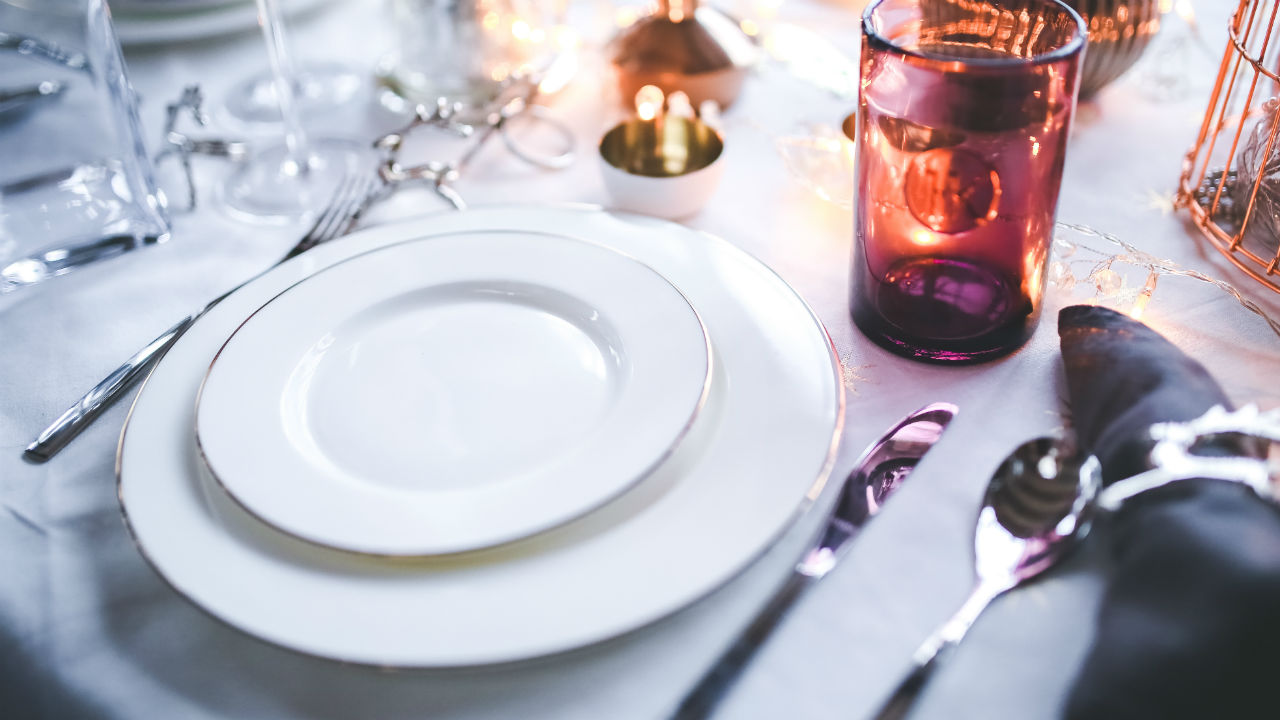Margaux Laskey shifted through sixteen different sizes before she finally became a size eight. Sideways. In the glorious finale of Size Ate, Laskey’s one-woman one-act play depicting the triumph of a woman over the prison of numbers, Laskey makes a lifeless number 8 come alive by turning it on its side and transforming into an infinity sign. Infinity is not necessarily huge but more-so indefinable. It is not a number but rather an all encompassing, unfathomable, vast possibility. 8, sideways, insinuates that a woman-- a sister, a mother, a lover-- cannot be incapsulated by something so tiny as a number. This is the lesson Margaux yearns to share with her audience.
Size Ate chronicles Laskey’s childhood, adolescence, and blossom into womanhood through the lens of her past and present struggles with body image. In what she describes as “cathartic advocacy”, Laskey uses the stage to speak out against an issue she has spent her own life battling. Size Ate fluctuates within Laskey’s own story, yet is framed in such a way that everything from her battles with anorexia to binge eating feel as if they are every woman’s battle. It is not simply eating disorders Laskey wants to combat, but any form of self-loathing that can plague a person’s soul; Laskey aims to give her audience a sword to slay their demons regardless of what those demons might be, and in the process seems to have frightened away her own ghosts... on good days at least.
The humor as well as the drama of Size Ate are at times self-deprecating, at times controversial, but always poignant. Laskey keeps her audience teetering between tears and fury, stringing together the stories of women a myriad of sizes and proving that each, whether starving or bingeing, is simply searching to discover the human within-- the human too infinitely vast to be decided by a tag in a pair of Levis.
She takes the stage--not alone-- but with a cast of mannequins. These headless, limbless, colorless torsos may only be defined by the bold, black numbers on their chests. They scream black 0, 2, 4, 6, 8, 10, 12, 14, and 16 on their chests and though they have no lines or definitive blocking Laskey describes them as being just as much characters in the story as herself.
Margaux, who currently lives in New York and was raised on carmel apples and brownie sundeas that still make her think of home. She is one of the few women I have ever met who seems completely and utterly at peace in and with her body. She lights up when she describes her favorite Hagen-Daz ice cream but even more so when asked about her upcoming wedding in Vermont. Food doesn’t scare Laskey anymore, and the fearlessness and honesty she exudes off the stage is perhaps even more inspiring than her stellar, emotionally-driven performance.
After her show, when Margaux warmly invited her audience to ask questions and make their own commentary, it becomes terrifyingly clear that not every woman has found the sense of body-peace Mar exudes. From inquires as to how to help best friends who examine a little too closely the back of cereal boxes and run one to many extra miles on the treadmill at the gym to candid confessions of bulimic tendencies from a small voice in the back row-- Margaux is clearly not alone in the struggles she has lived through.
From Olympic athletes to movie stars, the world of eating disorders is oddly glamorized by society. In one of the most startling parts of the play, Laskey excitedly declares to her audience what a beautiful, strong, confident woman she is only to turn on stage and be faced with a cover of Cosmopolitan devoted to Kate Moss’ lithe and billowy body, face taunt and cheekbones piercing. “I am so fat!” she screams, and the strange silent “humph” from her audience of college-aged students indicated they’ve all been there, felt that. Even though the discussion of eating disorders is becoming much more mainstream, often efforts to raise awareness add fuel to the fire. “Pro-Ana” and “Pro-Mia” sites on the web promoting bulimia and anorexia as a “lifestyle” instruct girls not only on tricks to starve and hurts ones body but how to hide behaviors from families and loved ones. Tabloids running stories on how “scary skinny” one celebrity is runs in the same issue a glossy tribute to celebrate another star’s recent weight loss.
The time has come not to discuss what is too skinny or too fat, too much or too little but rather what is just right. The conversation that needs to take place is not exactly how we should look but rather how we cultivated the soul inside, how our happiness might grow as opposed to our waistlines. Margaux Laskey, with her at time hilarious, at times agonizing one woman-show is sparking that conversation throughout the US with her tours of high schools, colleges, and conferences. Women size 0, women size 20, men size 32... Laskey’s show is for all people, because each of us-- as human beings-- are infinitely bigger than the numbers we attempt to measure ourselves with; Laskey has started the conversation, won’t you join in?
To learn more about Laskey’s show please visit http://sizeateshow.blogspot.com/
For resources regarding eating disorders please visit http://www.nationaleatingdisorders.org/






Add a Comment3 Comments
I totally agree Fiona. I would love to develop a forum or blog where all women struggling with body image and eating disorders, no numbers allowed. (ps I am ordering your book from amazon!)
February 19, 2010 - 3:06pmThis Comment
Thank you torimo and I do hope you enjoy the book, Fiona
February 19, 2010 - 7:35pmThis Comment
Women in the midst of an eating disorder have always shared 'tips' - this is not new - and instead of calling for a ban on such sites perhaps there needs to be dialogue between those who have recovered and those still caught up in the intensity of the experience.
February 18, 2010 - 1:41amFiona Place
Author of Cardboard: A woman left for dead
This Comment